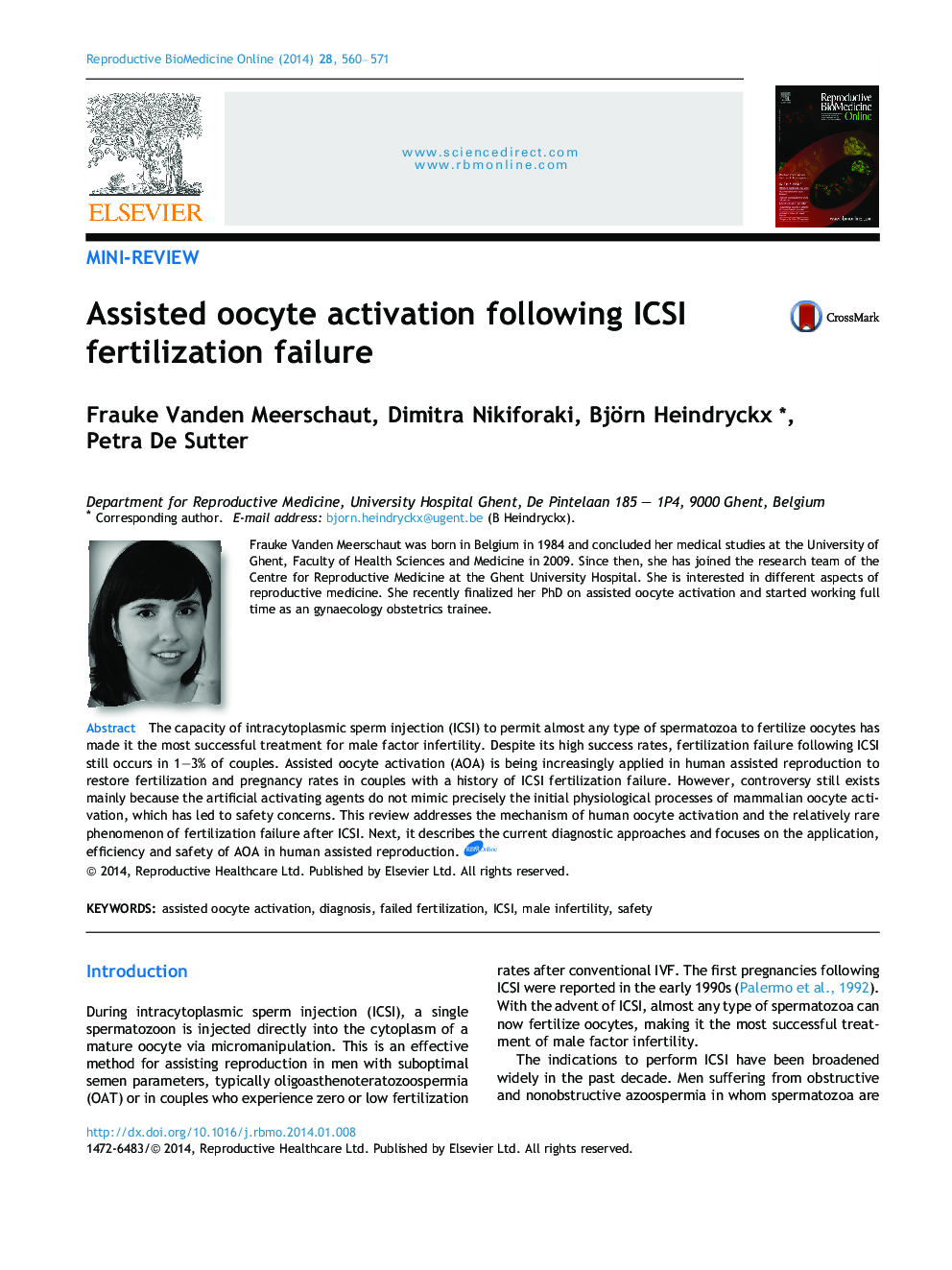| Article ID | Journal | Published Year | Pages | File Type |
|---|---|---|---|---|
| 6189035 | Reproductive BioMedicine Online | 2014 | 12 Pages |
The capacity of intracytoplasmic sperm injection (ICSI) to permit almost any type of spermatozoa to fertilize oocytes has made it the most successful treatment for male factor infertility. Despite its high success rates, fertilization failure following ICSI still occurs in 1-3% of couples. Assisted oocyte activation (AOA) is being increasingly applied in human assisted reproduction to restore fertilization and pregnancy rates in couples with a history of ICSI fertilization failure. However, controversy still exists mainly because the artificial activating agents do not mimic precisely the initial physiological processes of mammalian oocyte activation, which has led to safety concerns. This review addresses the mechanism of human oocyte activation and the relatively rare phenomenon of fertilization failure after ICSI. Next, it describes the current diagnostic approaches and focuses on the application, efficiency and safety of AOA in human assisted reproduction.Intracytoplasmic sperm injection (ICSI) is a very efficient technique used in couples diagnosed with severe sperm abnormalities. Fortunately, in only a minority of the couples ICSI does not lead to normal fertilization, which means that, in those couples, no (or very few) embryos will be available for transfer. Failure of fertilization following conventional ICSI can be related to the oocyte or the spermatozoon. Only a few diagnostic tests are currently available to assess the reason for ICSI fertilization failure. The most often advised treatment is assisted oocyte activation (AOA), a highly specialized fertilization technique that can be added to conventional ICSI to overcome fertilization failure in those couples. Since the late 1990s, many centres have been performing AOA in this rare group of patients, with restoration of fertilization and pregnancy rates in many couples. However, until adequate scientific evidence is provided regarding its safety and efficacy, AOA cannot yet be considered an established treatment. This review tackles the mechanism of human oocyte activation and the relatively rare phenomenon of fertilization failure after ICSI. Next, we describe the current diagnostic approaches and focus on the application, efficiency and safety of AOA in human assisted reproduction.
